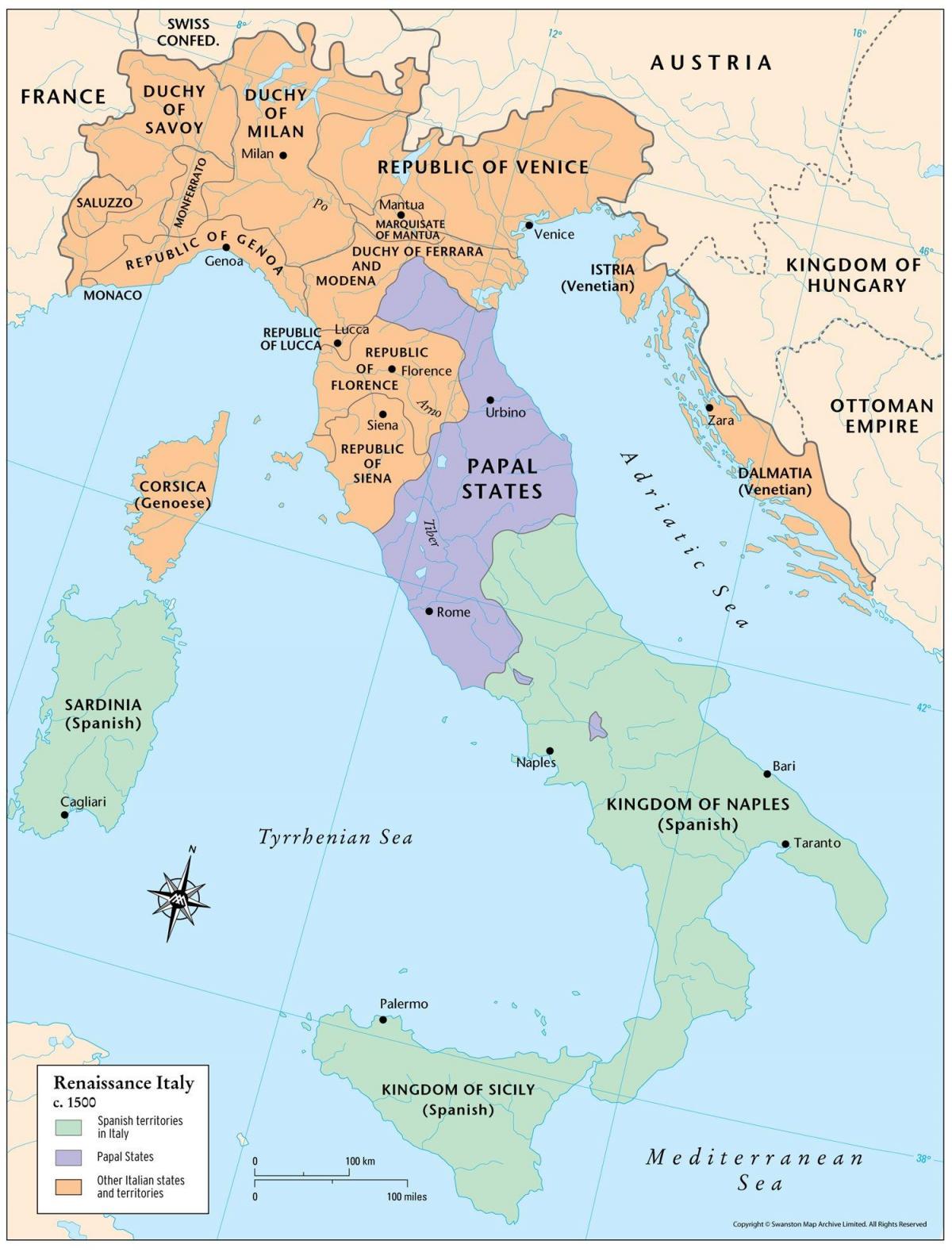search
Renaissance Italy map
Map of Italy renaissance. Renaissance Italy map (Southern Europe - Europe) to print. Renaissance Italy map (Southern Europe - Europe) to download. The term Italian Renaissance has not gone unchallenged; its meaning and boundaries have aroused much controversy. From the 1340s the idea of “rebirth” was a commonplace in critical writing. Authors spoke of how, with Dante and Giotto, both poetry and painting had been “reborn,” and in the following two centuries the same notion was often applied to other areas such as architecture, sculpture, and philosophy as its shown in renaissance Italy map. In this period, “rebirth” was always used in connection with some intellectual or artistic skill; it was not until the 19th century that historians such as the French Jules Michelet and then, above all, the Swiss Jacob Burckhardt (whose The Civilisation of the Renaissance in Italy was first published in German at Basel, Switz., in 1860) began to write of the Renaissance as a period of time.
For Burckhardt this period consisted, broadly speaking, of the 15th century in Italy, a time and place in which “medieval” man became “modern” man as its mentioned in renaissance Italy map. For him, the Italian of the 15th century was “the firstborn among the sons of modern Europe.” No historian today would hold to that definition. Nonetheless, the term, redefined, still enjoys overwhelming assent. For some historians (such as Lauro Martines), the Renaissance coincides with the life of the commune, stretching back to the 11th century; for others (such as Hans Baron), it sprang from the ideological battles that accompanied the wars of Florence and Milan at the beginning of the 15th century.
A majority consensus, however, still conceives of the Italian Renaissance as a period of cultural history having no very sharp chronological boundaries but stretching over the years from about 1340 to about 1550 as you can see in renaissance Italy map. Italy led the cultural and mental transformation of Europe which became known as the Renaissance. This was a period of great artistic achievement, mostly in urban areas and facilitated by the wealth of the church and the great Italian cities, which both harked back to and was influenced by the ideals and examples of ancient Roman and Greek culture.


